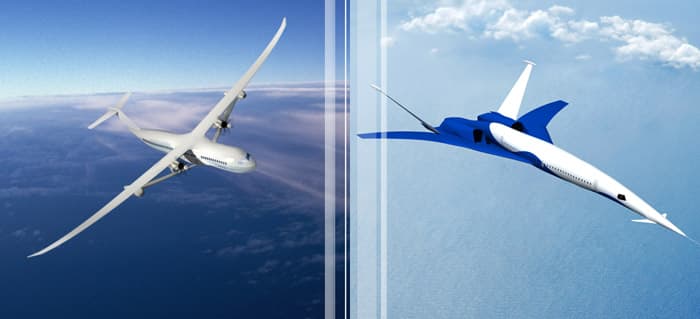Boeing's Supsersonic Airplane Concept Submitted To NASA
Boeing's engineers have been working on how the airplanes would look like & function 25-30 years from now. The company has already submitted their designs to NASA's N+3 program. The program aims at collecting concepts of the future commercial aircrafts. The designs Boeing's submitted look very promising. Two teams at Boeing's Research & Technology division have completed 18-month research on the topic and has come up with the designs that promise dramatic improvements in the fuel efficiency and environment friendliness of airplanes. NASA has already set very aggressive goals for the design teams.

Boeing's supersonic aircraft design team which includes BR&T, BCA, Pratt & Whitney, Rolls Royce, GE, Georgia Tech, M4 Engineering has focused on four different concepts. These include low fuel burn / low boom swing-wing arrow configuration, V-tail to reduce noise levels and control the sonic boom and an oblique 'scissor' wing concept. The fixed wing configuration has been nicknamed ICON II. It can carry 120 passengers in a two-class, single-aisle interior at a cruise speed of Mach 1.6 - 1.8. The range of ICON II would be 500 nautical miles.
Further details can be obtained from source link -
Source: #-Link-Snipped-#

Boeing's supersonic aircraft design team which includes BR&T, BCA, Pratt & Whitney, Rolls Royce, GE, Georgia Tech, M4 Engineering has focused on four different concepts. These include low fuel burn / low boom swing-wing arrow configuration, V-tail to reduce noise levels and control the sonic boom and an oblique 'scissor' wing concept. The fixed wing configuration has been nicknamed ICON II. It can carry 120 passengers in a two-class, single-aisle interior at a cruise speed of Mach 1.6 - 1.8. The range of ICON II would be 500 nautical miles.
Further details can be obtained from source link -
Source: #-Link-Snipped-#
0
